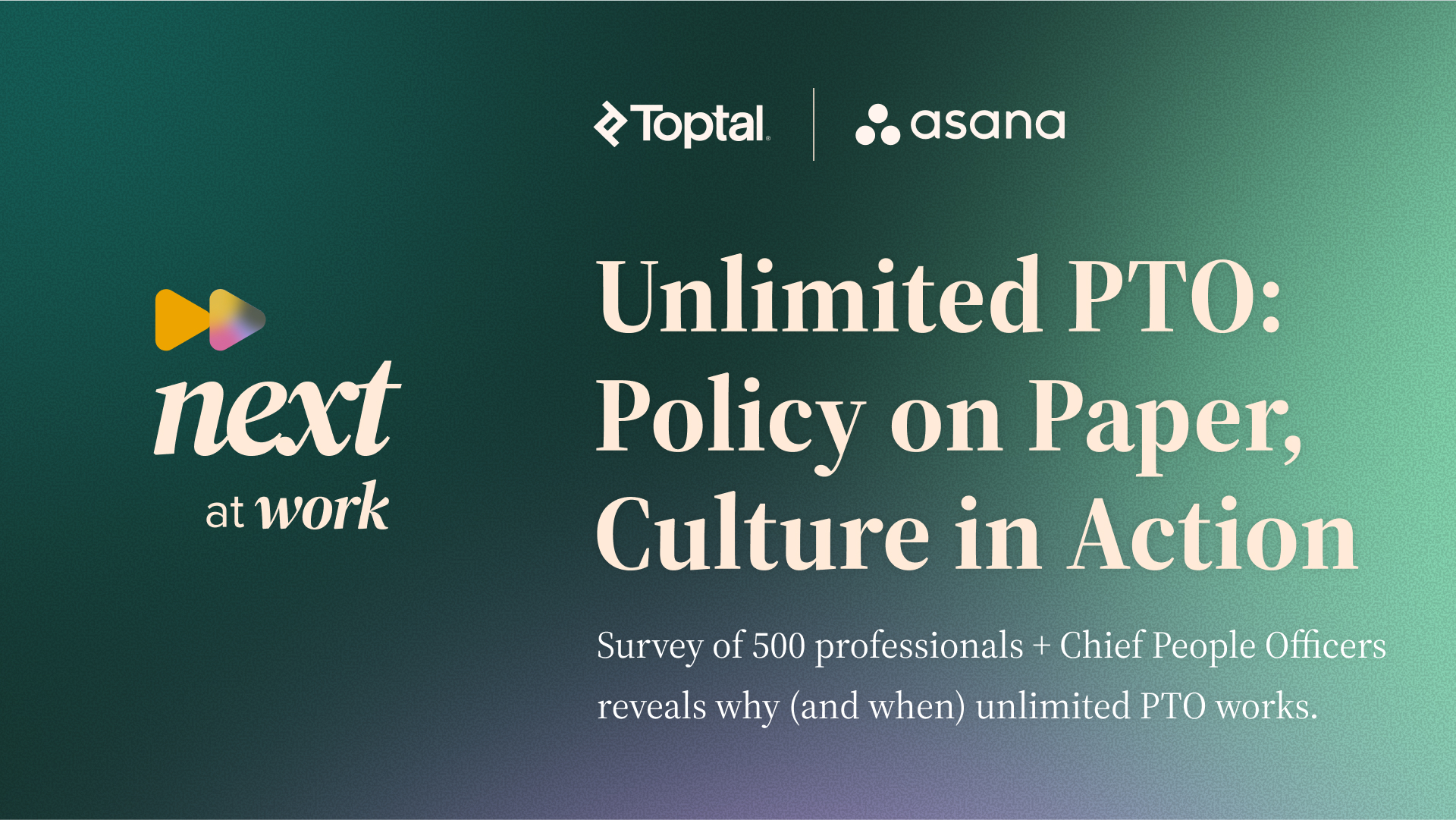Workforce planning strategy in the AI-driven economy
In the AI era, effective workforce planning is a pivotal step towards business growth and sustainability. By identifying areas for human-AI collaboration, addressing employee concerns, and adapting hiring strategies, organizations can enhance productivity and efficiency while fostering a harmonious, future-ready work environment.

AI is already having an impact on how we work, and it’s only going to become more prevalent in the years to come. An AI-driven economy is more than a hire or fire strategy. Instead, focus on your workforce planning strategy while effectively using the AI for your organization or your team.
There is no dilemma regarding whether to fire employees or hire new ones in the AI era. It simply requires a fresh perspective on the workforce of your company.
Workforce planning has become more important than ever, and both companies and employees must demonstrate flexibility in this regard.
Workable’s CHRO, Rob Long, says: “Right now people are still really trying to understand how this will impact the workforce. Some of the impacts and benefits are clear at a high level but much less certain when it comes to knowing exactly the extent to which it will impact certain functions or roles.”
“Right now people are still really trying to understand how this will impact the workforce. Some of the impacts and benefits are clear at a high level but much less certain when it comes to knowing exactly the extent to which it will impact certain functions or roles.”
By customizing your hiring strategy and identifying areas that humans can collaborate using AI tools, you can reach new heights in terms of performance and efficiency.
Let’s dive into the creation of a successful workforce planning strategy.
Contents
Human workers and AI can collaborate
There are several ways to describe the practice of collaboration between human workers and AI. It can be found online under names such as Combining Intelligence, Collaborative Intelligence, Integrated Intelligence, or Augmented Intelligence. All these terms are based on one specific notion: AI is not here to replace human workers, but to augment their capabilities.
Related: How AI can enhance human skills and collaboration at work
As an HR professional, you need to identify the areas where your human workers and AI can collaborate. This first requires a deep understanding of the tasks that your employees perform and the tasks that AI can perform better – and the difference between each.
According to a Harvard Business Review, humans require both cooperative and competitive skills to effectively work with AI systems. Cooperative skills include data-centric skills, AI literacy, and algorithmic communication, while competitive skills encompass emotional intelligence, holistic thinking, creativity, and critical thinking.
On the other hand, AI systems need to develop cooperative skills like natural language processing, explainability, adaptability, and context awareness, while their competitive advantages lie in analytical capacities, generativity, and performance at scale.
Organizations are advised to strike a balance between investing in human skills and technological capabilities to foster a symbiotic relationship between humans and AI.
Current employees will be affected by AI
It’s essential to understand how AI will affect your current employees before shaping a solid workforce planning strategy. Some of your employees may have concerns about their job security or their ability to adapt to new technology.
It’s your job as an HR professional to address these concerns and provide training and support to help your employees adapt to the changing workplace.
According to a survey by Qualtrics, employees see the potential positive impact of AI in the workplace primarily in terms of increased productivity. This includes automating repetitive tasks, allowing employees to focus on more complex work, and enabling faster and advanced data analysis.
The main concerns expressed by workers regarding AI’s impact are the loss of the human element in work (highlighted by 55% of respondents) and the potential erosion of critical thinking skills (selected by 52% of employees).
One of the greatest worries among employees is the possibility of AI replacing jobs altogether. About 68% of respondents believe that some jobs are at risk due to AI, and 23% feel that their own jobs are in jeopardy. There is also confusion and concern regarding policies related to AI in the workplace.
Nearly 60% of employees either state that their company lacks an AI policy or they are unaware of such a policy, leaving them uncertain about what is allowed or not in relation to AI usage.
Perhaps some jobs will be lost or incorporated into larger disciplines. To alleviate employees’ fears of AI taking their jobs, it is crucial to provide them with clear communication and transparency about the role of AI in the workplace.
This can involve comprehensive and ongoing training programs that focus on upskilling and reskilling employees to adapt to the changing work landscape and take advantage of the opportunities presented by AI.
Additionally, creating a culture that values and rewards human skills, such as critical thinking, creativity, emotional intelligence, and problem-solving, can reinforce the importance of these unique abilities alongside AI technologies.
New employees will be affected too
As an HR professional, you need to understand how potential new employees will be affected by AI. This means looking at the skills and knowledge required for jobs in the future and adjusting your hiring strategy accordingly.
An astonishing new survey conducted by Intelligent finds that 86% of hiring managers believe that having ChatGPT can be more valuable than a college degree for entry-level jobs.
Skills related to data analysis, AI literacy, and the ability to work effectively in collaboration with AI systems are highly sought after in the AI era.
Soft skills such as critical thinking, creativity, and problem-solving are more important now than ever. These are skills that are difficult to automate and are likely to become more valuable as AI becomes more prevalent in the workplace.
You can adjust your workforce planning strategy according to the latest developments and the real needs of your company, keeping in mind that AI is still a tool and not an enemy of humans.
Change your strategy for hiring people
According to a report by Accenture, 84% of business executives believe they need to use AI to achieve their growth objectives. You are probably among that group.
As an HR professional, you need to adapt your hiring strategy accordingly. You must begin searching for employees who possess the skills and knowledge required to work alongside AI. Additionally, if you are a team manager, you can offer guidance and assist your employees in upskilling and preparing to incorporate AI into their workdays.
To implement changes in your workforce planning strategy, you need to build a business case for change. This means using data to show the potential benefits of integrating AI into your workforce. You also need to consider the budget required to implement these changes.
However, there is no need to panic. Actually, we are presently living in a transitional period where we need to stay vigilant while also dedicating time to prepare for what the future holds.
Implementing new workforce planning should only happen when we have a clear understanding of our company’s needs and feel prepared to take action.
Hiring, firings, reorganizations and outsourcing
Once you have built a business case for change, you need to create a timeline for implementation. You can reassess the existing team structure, make new hires, or outsource based on this agreed timeline. It is essential to communicate it clearly to your employees and provide training and support to help them adapt to the changes.
If you know your team’s strengths and weaknesses, you can make an informed decision about using AI in the workplace.
Does it mean investing in new hires who are more familiar with new technologies? Does it mean providing reskilling opportunities to your existing employees?
Any decision must be made based on an organized plan and with careful consideration. In some cases, reorganization may be the best option for your company, while in others, outsourcing may be necessary due to time constraints. Consider AI tools as a way to enhance your employees’ abilities and continue investing in both new technologies and personnel.
There is only one word that accurately describes effective workforce planning for both employees and HR professionals, and that is adaptability.
“People are very aware that for many roles times are changing, so hiring people who are adaptable and comfortable with change is more important than ever.”
“People are very aware that for many roles times are changing, so hiring people who are adaptable and comfortable with change is more important than ever. The impact on productivity for certain roles will certainly be on people’s minds. Do they need to hire 10 or could they hire six now and get the same results?” Rob Long comments.
“But I don’t think many people have worked it out just yet. One clear change is the increase in roles related to creating AI technology, those are increasing rapidly and you can see companies investing more heavily here.”
Frequently asked questions
- What is the role of AI in workforce planning?
- AI augments human capabilities in the workplace, driving productivity and efficiency. It's integral to modern workforce planning strategies.
- How can we combine human talent and AI?
- Identifying tasks best suited for humans or AI and fostering cooperative and competitive skills in both can optimize collaboration.
- How can HR address employees' concerns about AI?
- Open communication, ongoing training programs, and emphasis on human skills can help alleviate fears and facilitate adaptation to AI.
- What skills are sought after in an AI-driven economy?
- Skills like data analysis, AI literacy, critical thinking, creativity, and problem-solving are highly valued in an AI-driven economy.
- How should hiring strategies change in an AI era?
- Hiring strategies should prioritize candidates with AI-related skills and the ability to collaborate with AI systems. Upskilling existing employees is also key.




